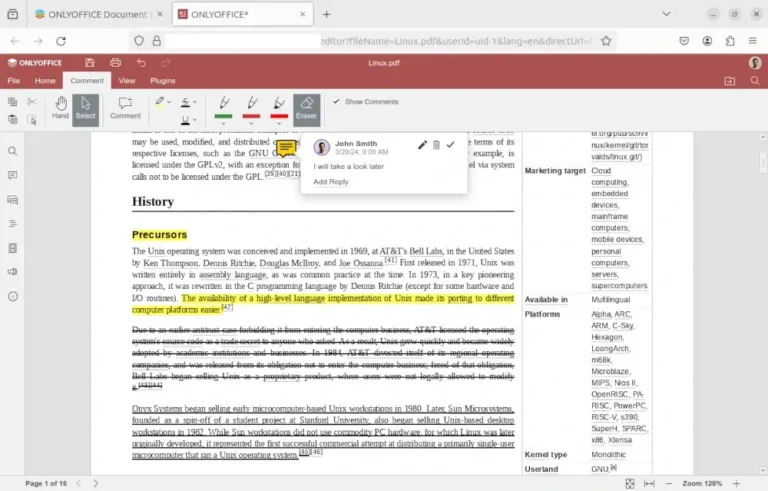Are you looking to efficiently determine if any element of an iterable is true in Python?
The any() function can help with that!
This article explores the syntax and examples of the Python any() function across various data structures like lists, tuples, sets, and dictionaries.
We will also compare different approaches, such as duck typing vs. type checking, and showcase practical examples of how to apply the any() function for enhancing readability and validating data.
Let’s dive in and master the usage of Python any() function together!
Key Takeaways:
Contents
- 1 Key Takeaways:
- 2 Introduction to Python any() Function
- 3 Syntax of Python any() Function
- 4 Examples of Python any() Function
- 5 Comparison of Python any() Function
- 6 Using Python any() Function Across Iterable Types
- 7 Applying Python any() Function
- 8 Practical Examples
- 9 Conclusion
- 10 Frequently Asked Questions
- 10.1 What is the purpose of any() in Python?
- 10.2 How do I use the any() function in Python?
- 10.3 Can I use any() to check if any element of a string is True?
- 10.4 Will any() return True if there are only non-boolean values in the iterable?
- 10.5 Can I use any() with nested iterables?
- 10.6 Is there a way to stop the any() function from iterating through the entire iterable?
Introduction to Python any() Function
The Python any() function is a powerful tool used to determine the truth value of any iterable object.
It returns True if at least one element within the iterable object is True, otherwise it returns False. This function can be particularly useful when you want to quickly check if any element meets a specific condition without having to manually iterate through the entire collection.
For instance, you can use the any() function to check if any element in a list is greater than 10:
numbers = [5, 8, 12, 3]
result = any(num > 10 for num in numbers)
This will return True as the element ’12’ in the list satisfies the condition.
Overview and Use Cases
The overview of the Python any() function includes its versatility in evaluating truth values based on specified conditions, making it a valuable asset for simplifying code and handling diverse object types.
When working with lists, dictionaries, or any iterable object in Python, the any() function proves to be incredibly useful. It takes an iterable as an argument and returns True if any of the elements in the iterable are True. Otherwise, it returns False.
For instance, imagine you have a list of boolean values and need to check if at least one of them is True. Using the any() function, you can achieve this task with a concise and readable line of code.
The any() function is not limited to boolean values. It can also handle other object types, such as strings or integers, by evaluating their truthiness. This flexibility makes it a powerful tool for conditional checks in various scenarios without the need for complex logic.
Syntax of Python any() Function
The syntax of the Python any() function involves accepting iterable objects as input and returning True if any of the elements meet the specified condition.
In Python, the any() function is incredibly useful for checking if any element in an iterable object satisfies a specified condition, saving time and coding effort. The structure of this versatile function is quite simple:
- any(iterable)
Here, ‘iterable’ represents the collection of elements being evaluated. The any() function iterates through each element in the iterable and returns True as soon as it finds an element that evaluates to True based on the condition specified. If no element meets the condition, any() returns False.
Examples of Python any() Function
Illustrative examples showcasing the Python any() function can help in understanding its behavior with different data structures and conditions.
When operating with lists, the any() function returns True if at least one element in the list evaluates to True; otherwise, it returns False. For instance, in a list containing [False, True, True], the function would output True since at least one element is True.
Moving to dictionaries, the function will return True if any dictionary value is True. In tuples, any() works similarly to lists, evaluating the truth conditions of elements within the tuple. When used with sets, the function examines if any element in the set is True and produces the corresponding output.
Lists, Tuples, Sets, and Dictionaries
When working with lists, tuples, sets, and dictionaries, the Python any() function proves to be a versatile tool for checking truth values within these data structures.
, any() with the condition x == False would yield True since one element matches the condition.
In terms of dictionaries, any() can be used to check conditions against dictionary values. Suppose we have a dictionary {\’a\’: 10, \’b\’: 20, \’c\’: 30}, applying any() with the condition value > 20 would return True since one value satisfies the condition.
”
}
The any() function in Python can iterate through a list and return True if any of the elements meet the specified condition. For example, consider a list containing numbers like [1, 2, 3, 4]. Applying any() to this list with the condition x > 2 would return True since there is an element greater than 2.
Similarly, when applied to a tuple, any() follows the same logic. In a tuple (5, 6, 7, 1), using any() with the condition x
Moving on to sets, the any() function is handy for evaluating conditions within a set’s elements. For instance, if we have a set like {True, False, True}, any() with the condition x == False would yield True since one element matches the condition.
In terms of dictionaries, any() can be used to check conditions against dictionary values. Suppose we have a dictionary {‘a’: 10, ‘b’: 20, ‘c’: 30}, applying any() with the condition value > 20 would return True since one value satisfies the condition.
Strings and Conditional Statements
In Python, the any() function can also be utilized with strings and conditional statements to determine the truth value of specified expressions.
For instance, you can use the any() function in conjunction with conditional statements to check if any character in a string is a vowel:
string_example = 'hello'
result = any(char in 'aeiou' for char in string_example)
print(result) # Output: True
This code snippet demonstrates how the any() function can evaluate the expression ‘char in ‘aeiou” for each character in the ‘string_example’ variable, ultimately returning True as there is at least one vowel present in the string.
For Loop Implementation
Implementing the Python any() function within for loops allows for efficient evaluation of truth conditions across different sequences and cases.
By utilizing the any() function, you can easily iterate through lists, tuples, sets, or any other iterable to check for the presence of at least one ‘True’ value. For example, consider a scenario where you have a list of boolean values:
-
data = [True, False, True, False]
You can use a for loop in combination with the any() function to determine if any value in the list is ‘True’.
| Example: |
|---|
|
for value in data: if any(value): print(‘At least one True value found’) |
Comparison of Python any() Function
A comparison between Duck Typing and Type Checking methodologies in Python can shed light on the distinct testing properties associated with the any() function.
Duck Typing in Python focuses on whether an object can perform a required method or behavior, rather than its actual type. When using the any() function with Duck Typing, the code will iterate through an iterable until a truthy value is found. This approach emphasizes functionality over explicit types, offering flexibility but potentially leading to runtime errors if objects lack expected behavior.
On the other hand, Type Checking involves verifying the specific types of objects at compile-time or runtime. With Type Checking, the any() function is validated against predefined data types, ensuring more strict and predictable outcomes. Although this method provides greater clarity and error prevention, it may result in less flexibility compared to Duck Typing.
Duck Typing vs. Type Checking
Understanding the differences in Duck Typing and Type Checking is essential to grasp how Python implements specific properties when using the any() function.
Duck Typing in Python allows objects to be determined by their behavior rather than their type. It emphasizes the presence of certain methods or properties rather than the specific type itself, which leads to a more flexible coding approach.
On the other hand, Type Checking verifies the data type of objects at compile time. This approach ensures that the correct types are used throughout the code, enhancing the predictability and reliability of the program.
When utilizing the any() function, Duck Typing offers more versatility as it focuses on whether the object can perform a specific action without being restricted by explicit type declarations. In contrast, Type Checking enforces strict adherence to predefined data types, providing more clarity but limiting adaptability in certain cases.
Using Python any() Function Across Iterable Types
The Python any() function’s ability to work across different iterable types provides a flexible and efficient solution for evaluating truth conditions within varied data structures.
By accepting an iterable as its parameter, any() can effectively determine if at least one element in the iterable meets the specified condition. This feature significantly streamlines the process of evaluating multiple values within lists, dictionaries, sets, or any other iterable object. The function excels in scenarios where you need to check for the presence of truthy values without having to write elaborate loops or conditions.
The beauty of any() lies in its simplicity, as it returns a boolean value that symbolizes the outcome of the condition check. This direct approach not only enhances readability in code but also improves the overall efficiency of truth condition assessments.
Sequences and Dictionaries
When working with sequences and dictionaries, leveraging the Python any() function aids in efficiently checking truth conditions based on keys, values, or specific elements.
This versatile function returns True if any of the keys, values, or elements in the provided sequence or dictionary meet the specified condition. For instance, when examining a list of numbers, you can use any() to verify if there are any negative values present. In a dictionary, any() helps to ascertain if at least one key meets certain criteria, such as being a string. Its ability to handle different data structures seamlessly makes any() a powerful tool in Python programming.
Applying Python any() Function
Applying the Python any() function in list comprehensions and generators streamlines the process of checking conditions and values while enhancing code readability.
When working on iterating through sequences in Python, using the any() function within list comprehensions and generators proves to be a game-changer. This function allows you to quickly determine if any element in an iterable satisfies a certain condition, without the need for writing intricate loops. It provides a concise and efficient way to validate multiple elements against a particular criterion.
For instance, consider a scenario where you have a list of numbers and you want to check if any of them is divisible by 5. Instead of lacing your code with cumbersome loops and conditional statements, you can elegantly achieve this using the any() function within a list comprehension. This not only simplifies your code but also makes it more understandable to fellow programmers who might review or collaborate on your work.
Comprehensions and Generators
Utilizing the Python any() function within comprehensions and generators enables seamless error handling and efficient evaluation of conditions to return specific values.
When integrating any() within a comprehension, it allows for a concise and readable way to check if any of the elements in an iterable meet the specified conditions.
The beauty of this function lies in its ability to short-circuit evaluation, returning True as soon as a valid condition is found, thus improving performance.
In scenarios where you need to handle errors or determine the presence of specific criteria, any() offers a powerful tool for simplifying the logic flow.
Practical Examples
Practical examples showcasing the Python any() function can encompass scenarios for enhancing data readability, validating inputs, and filtering or comparing different data structures effectively.
For instance, when working with a list of boolean values, the any() function can help validate if at least one element is True, simplifying the process of checking conditions across the elements. This is especially useful in scenarios requiring quick checks or conditional branching based on the presence of a ‘True’ value within the list.
Enhancing Readability and Validating Data
Leveraging the Python any() function for enhancing readability and data validation in code implementation provides tangible results in improving the quality and efficiency of the program.
When working with Python, the any() function proves to be a versatile tool for simplifying logical operations. Its ability to check any iterable object for True values and return True if at least one element meets the condition can significantly streamline your code. By incorporating any() strategically, you can ensure your code is concise and easy to understand.
Along with enhancing readability, the any() function plays a crucial role in data validation. It allows you to quickly validate multiple conditions within a single line of code, making your data handling more efficient.
Filtering and Comparing Data Structures
Filtering and comparing data structures using the Python any() function showcases its diverse properties and effectiveness in handling different implementation cases and sequences.
One key feature of the any() function is its ability to evaluate an iterable and return True if at least one element in the iterable is True, otherwise it returns False.
This is particularly useful when you have a list or a tuple and you want to quickly check if any element meets a certain condition.
For instance, if you have a list of numbers and you want to determine if any of them are greater than 10, you can simply use the any() function along with a list comprehension like:
- numbers = [5, 10, 15, 20]
- result = any(num > 10 for num in numbers)
Emulating zip() Function
Emulating the zip() function with the Python any() function offers insights into its testing capabilities and enhances understanding of its behavior in specific scenarios.
When using the any() function to replicate the behavior of zip(), it allows for the creation of a more customized testing environment. For instance, you can apply any() to check if at least one iterable is empty when zipping multiple iterables, providing a robust way to handle such scenarios within your code.
The any() function opens up possibilities to streamline testing processes, such as evaluating conditions across multiple iterables simultaneously. This flexibility helps in creating efficient and concise testing suites, ultimately aiding in code optimization and quality assurance.
Conclusion
The Python any() function proves to be a versatile and efficient tool for evaluating truth conditions, iterating through data structures, and optimizing code behavior in various applications.
The any() function in Python is particularly useful for checking if any element in an iterable object evaluates to True, simplifying the verification process in complex data structures like lists, tuples, sets, or dictionaries.
This functionality streamlines the code logic by eliminating the need for multiple conditional statements, enhancing the readability and maintainability of the codebase.
The any() function significantly improves code efficiency by short-circuiting the evaluation process as soon as a True value is found, minimizing unnecessary computations and optimizing performance.
Frequently Asked Questions
What is the purpose of any() in Python?
The any() function in Python is used to determine if any element of an iterable (such as a list or tuple) is True. It returns True if at least one element is True, otherwise it returns False.
How do I use the any() function in Python?
To use the any() function, simply pass an iterable as the argument. For example, any([True, False, False]) will return True, while any([False, False, False]) will return False.
Can I use any() to check if any element of a string is True?
No, the any() function only works with iterables such as lists, tuples, and dictionaries. To check if any character in a string is True, you can use the ‘in’ operator.
Will any() return True if there are only non-boolean values in the iterable?
No, the any() function will only return True if at least one element in the iterable is explicitly True. Non-boolean values such as numbers or strings will be evaluated as False.
Can I use any() with nested iterables?
Yes, the any() function can be used with nested iterables, such as a list of lists. It will return True if at least one element in any of the nested iterables is True.
Is there a way to stop the any() function from iterating through the entire iterable?
Yes, you can use the built-in function ‘any()’ with a generator expression instead of an iterable. This will allow you to stop the iteration as soon as a True value is found.



